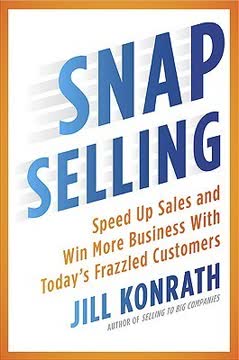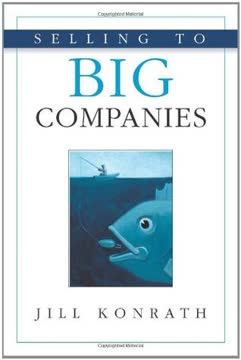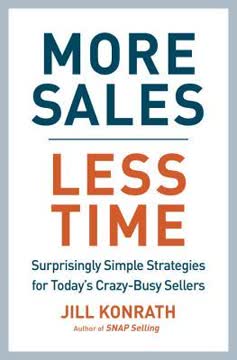Key Takeaways
1. Understand the Frazzled Customer: Time is Their Most Precious Commodity
Your customers are just as frazzled as you are.
Acknowledge reality. In today's hyper-paced world, your customers are overwhelmed, stressed, and constantly battling overflowing to-do lists. This "Frazzled Customer Syndrome" means they have minimal mental bandwidth for anything new, especially sales pitches. They prioritize simplicity and avoiding additional work, even if it means sticking with a less-than-perfect status quo.
The "D-Zone." This pervasive state of overwhelm leads to the "D-Zone," where prospects:
- Delete irrelevant messages instantly.
- Delay decisions indefinitely.
- Default to the status quo.
- Dismiss or Disappear from contact.
Traditional selling tactics like feature-advantage-benefit (FAB) presentations or aggressive closing techniques are immediately rejected, as they add to the customer's burden rather than alleviating it.
Shift your mindset. To succeed, you must stop blaming customers for their "rudeness" or "laziness" and instead recognize that their behavior is a natural reaction to their chaotic environment. Your success hinges on adapting your approach to their reality, focusing on how you can simplify their lives and help them achieve their objectives with minimal effort.
2. Embrace the SNAP Factors: Your Guiding Principles for Modern Selling
Consciously or not, today’s prospects evaluate you on these four criteria in every single interaction you have with them.
The SNAP framework. To navigate the frazzled customer landscape, every interaction must align with the four SNAP Factors:
- Simple: Eliminate complexity and effort from their decision process.
- iNvaluable: Provide unique personal value beyond your product.
- Aligned: Stay ruthlessly relevant to their business objectives and priorities.
- Priority: Ensure your offering addresses their urgent needs.
Constant evaluation. Customers are constantly, often subconsciously, assessing you against these factors. A "SNAP Check" helps you brutally honestly evaluate your approach from their perspective. If you fall short on any factor, you risk being relegated to the dreaded D-Zone, regardless of your product's inherent quality.
Strategic advantage. Most sellers ignore these critical customer filters, continuing with outdated methods. By consciously integrating SNAP into your planning and interactions, you gain a significant competitive advantage, making your offerings irresistible and accelerating sales cycles.
3. Master the First Decision: Gain Access with Irresistible Messages
To get a frazzled customer to grant you access, it’s imperative that you convey all this information in a series of twenty- to thirty-second “touches” (via phone, e-mail, or direct mail).
The "Allow Access" hurdle. The first decision a customer makes is whether to grant you any of their precious time. They are not waiting for your call; they are actively trying to avoid interruptions. Your goal is to move them from oblivious to curious, proving that a conversation with you is worth their limited time.
Crafting the "unignorable" message. Your initial outreach (email, voicemail) must be concise, relevant, and value-driven. It needs to:
- Establish Credibility: Reference a referral, cite pre-call research, or mention a relevant trigger event.
- Pique Curiosity: Communicate a strong value proposition, share an insightful idea, or allude to important industry information.
- Close for Next Step: Clearly state your follow-up, inviting a non-threatening next step.
Avoid self-promotional jargon, technical details, or generic "checking in" messages, which are instant "delete" triggers.
Be an invaluable resource. Beyond initial messages, consistently provide value through educational content (articles, white papers, webinars) that addresses their issues. Upgrade your digital presence (LinkedIn profile, blog) to showcase your expertise and commitment to their success, making you a trusted resource even before a meeting.
4. Lead the Second Decision: Guide Customers from Complacency to Commitment
Helping your customers determine if making a change is “worth it” is the main focus of the second decision.
Overcoming inertia. Once you've gained access, the next challenge is convincing customers that changing their status quo is "worth it." This involves overcoming their natural resistance to disruption and the fear of additional work. Your role shifts from piquing curiosity to becoming a change agent, guiding them towards conceptual buy-in.
The "Mind Over Chatter" meeting. Your initial meeting is crucial. It's not for pitching your product, but for demonstrating your expertise and understanding of their business. Prepare thoroughly by researching their company, industry, and specific challenges. Use "assumption-based" opening statements that show you've done your homework, earning the right to ask deeper, consultative questions.
Enrolling in possibilities. Focus on "enrolling" prospects in a vision of what's possible if they change. This means:
- Letting go of the outcome: Don't appear desperate for the sale.
- Focusing on possibilities: Paint a compelling picture of tangible outcomes.
- Not about your product: It's about the difference it makes for them.
- Extending the invitation: Invite collaboration on next steps.
This approach transforms skepticism into anticipation, making them willing to explore change even without all the details.
5. Become an Invaluable Expert: Your Personal Value is the Ultimate Differentiator
The only chance to truly differentiate yourself today lies in the value you personally bring to the relationship.
Beyond product features. In a market saturated with similar products and services, your personal expertise becomes the ultimate differentiator. Customers can get comparable offerings anywhere, often cheaper. They cannot, however, buy your unique brain, knowledge, problem-solving capabilities, or ability to create new options.
Cultivate your expertise. Develop a deep understanding of your customers' business environment, challenges, and marketplace. This doesn't require perfection, but a strong working knowledge that allows for intelligent conversations. Focus on your "MVP talents" – your unique strengths, passions, and abilities – to become a "Most Valuable Player" to your clients.
Create the "$500 customer experience." Orchestrate rich, compelling interactions that go beyond traditional presentations. Replace generic PowerPoints with:
- "I Understand Your Challenge" Strategy: Use visuals (cartoons, simple diagrams) to illustrate problems you solve.
- "Closing the Gap" Strategy: Facilitate discussions on their "Today" vs. "Future" state.
- "Mind Expansion" Strategy: Use mind maps or diagrams to broaden their perspective on issues.
- "Show and Don't Tell Too Much" Strategy: Selectively show relevant samples, then pivot to business-focused questions.
These strategies engage customers in a collaborative dialogue, demonstrating your value and building trust.
6. Simplify the Decision-Making Process: Eliminate Complexity at Every Turn
Simplicity means the achievement of maximum effect with minimal means.
Combat overwhelm. Once customers are conceptually on board with change, the sheer complexity of the internal decision-making process can halt progress. Frazzled customers, often suffering from "decision naïveté," will abandon initiatives if they perceive too much effort or risk. Your role is to be their "Decision Guide."
Lead with simplicity. Proactively simplify the path forward by:
- Being a matter-of-fact guide: Confidently lead discussions, asking tough, relevant questions about their internal process, stakeholders, and potential obstacles.
- Illuminating the path: Walk them through your process, detailing responsibilities and timelines, even if it reveals potential challenges. This builds trust and competence.
- Having candid conversations: Address potential showstoppers (funding, internal resistance, politics) unflinchingly. Bringing these issues into the open simplifies them and positions you as a trusted advisor.
Strategic simplification tactics:
- Augment, Don't Replace: Show how your solution complements existing systems or processes, reducing perceived disruption.
- Think and Act Small: Propose pilot projects or phased implementations to reduce initial risk and budget hurdles.
- Root Out All Complexity: Continuously analyze your sales approach, tools, and company policies to identify and eliminate anything that adds unnecessary difficulty for the customer.
7. Win the Third Decision: Secure the Business by Minimizing Risk and Collaborating
To win their business, they must determine that: Your product, service, or solution is the best option for their business needs.
The final hurdle. At this stage, prospects are committed to change and evaluating options. Your competition is fierce, including incumbents, internal resources, and other vendors. The customer's primary concern is minimizing risk and making a justifiable, career-safe decision.
Balance value and risk. While a strong business case is essential, customers also weigh the perceived risk. You must:
- Be Compelling: Tell stories and use simple graphics to paint a vision of a better future, engaging their emotions and logic.
- Clarify Business Value: Help them quantify the financial impact (ROI, payback) and the "cost of inaction."
- Minimize Risk: Proactively address their fears (e.g., project failure, financial solvency, cultural fit). Leverage qualitative data, ensure transparency, manage expectations, engage multiple stakeholders, and offer strong references.
Be the preferred choice. Differentiate yourself by continuing to act "as if" they are already a customer. Collaborate, share ideas, and provide insights. Use tools like competitive checklists to educate them on what to look for, positioning yourself as the expert guiding their decision.
8. Prioritize Momentum: Keep the Sales Process Moving Forward
As deals get older, they lose momentum, and that translates into a significantly lower probability of winning the deal.
Combat "black hole" syndrome. Even hot prospects can disappear due to shifting priorities or information overload. It's your responsibility to maintain momentum and keep the decision at the forefront of their minds. Avoid "just checking in" messages; every contact must provide value.
Avoid TMTQ (Too Much, Too Quickly). Resist the urge to overwhelm prospects with all your information at once. Instead, parcel out educational resources (articles, case studies, checklists) strategically, addressing specific sticking points as they arise. This simplifies their learning and decision process.
Become a catalytic agent. Proactively engage other stakeholders, introduce implementation teams early, and involve senior executives from your company to demonstrate commitment and build confidence. If the deal stalls, re-qualify it or consider changing your strategy (e.g., focusing on a different decision-maker or a smaller project scope).
Make it easy to say "yes." Simplify the final commitment by:
- Proposing fewer options.
- Breaking down offerings into smaller, manageable pieces.
- Suggesting "more bang-for-the-buck" instead of price cuts.
- Adapting creative payment solutions.
- Simplifying contracts.
By consistently providing value, simplifying complexity, and proactively guiding the customer, you become indispensable, ensuring your opportunities don't fizzle out.
Last updated:
Review Summary
SNAP Selling receives generally positive reviews, with an average rating of 3.89/5. Readers appreciate its practical advice for modern sales techniques, focusing on simplifying processes and aligning with customer priorities. Many find the SNAP framework (Simple, iNvaluable, Aligned, Priority) helpful for approaching busy prospects. Some readers consider it a valuable resource for both experienced and new salespeople. However, a few critics note that some content feels repetitive or not groundbreaking. Overall, the book is praised for its actionable insights and tools for improving sales performance.
Similar Books
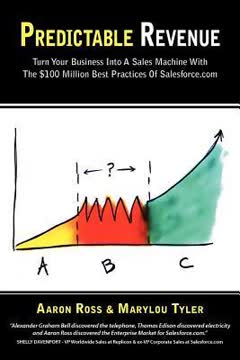

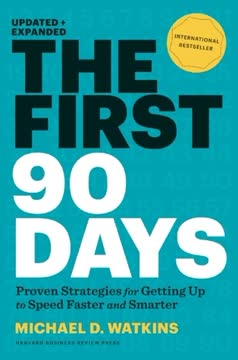


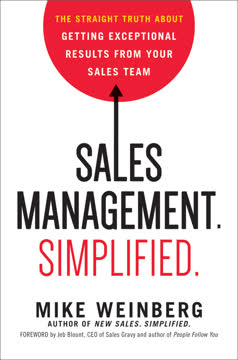

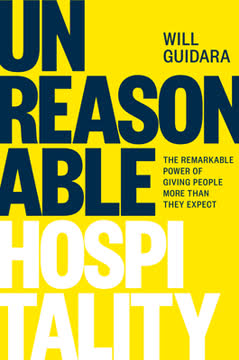
Download PDF
Download EPUB
.epub digital book format is ideal for reading ebooks on phones, tablets, and e-readers.
